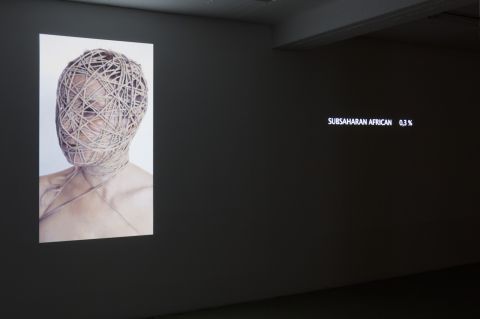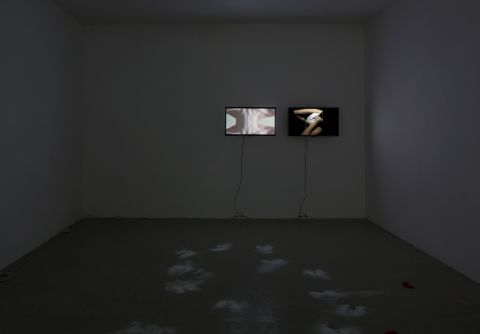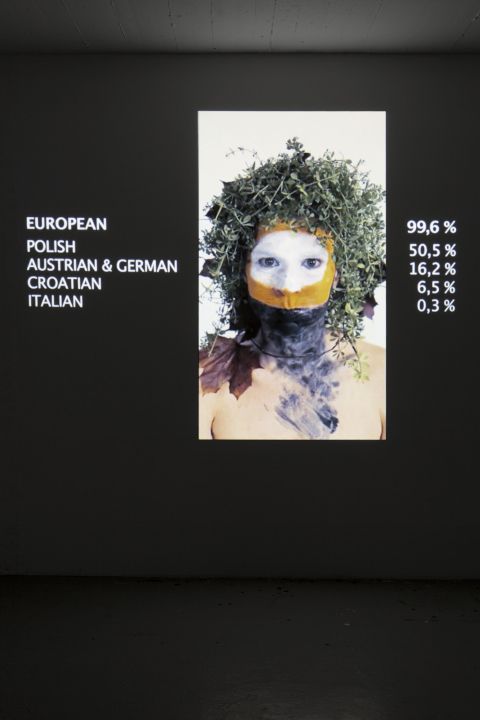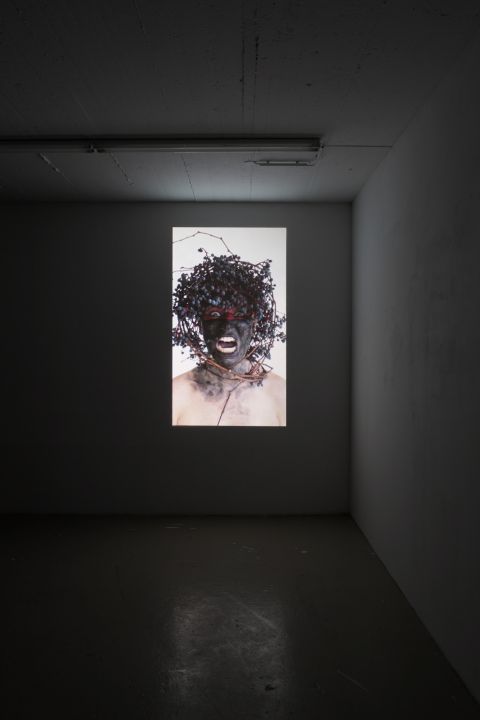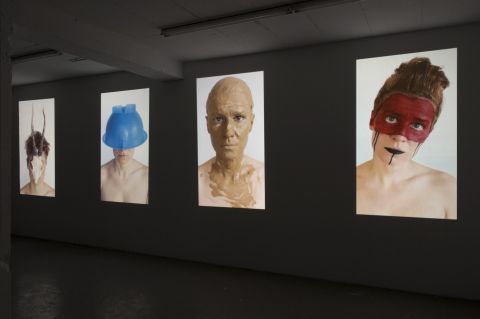Becoming Native
in: Installation » 2019
Galerie Martinetz, Cologne
06.04.-03.06.2019
Images by Tamara Lorenz
Ancestor worship. The veneration of our forefathers. It is but one process of possible temporal and spatial positioning within this world - experienced as a conscious entity at the end of a deeply rooted network. An ancient practice originating in humankind's existential encounter with death. But also in the existential encounter with life as something conceived, born and protected by others, like part of a long chain reaching back into the prehistorical fog. It is an identity-founding cult that makes us a component of an almost trans-temporal body.
Up until recent times, knowledge of our ancestors has been passed down through old rites and religions, however, they are being replaced by contemporary counterparts; genetics in combination with digital processing. For the last decade, simple genetic testing at a low cost has enabled a new form of ancestor worship that is available faster than any walk through a cemetery or archive.
The knowledge may be alarming. What do we do if we are genetically connected to an ethnic group that we do not want to or cannot identify with at all? And what if our origins no longer have a centre that we would like to call home?
Perhaps new relatives with whom we share significant genetic information can help us overcome these concerns. Not a social network but a genetic network. And from this combination of characteristics and stories, maybe a new polymorphic identity of a biological clan that, until now, has been unknown, will emerge.
Evamaria Schaller explores the possibilities of biomedical self-discovery in her current exhibition. She discovered foreign ancestors from the not so distant past in Eastern Europe and the south of the continent, but also in Africa and Asia. The internal genetics of the body seem to be globalised. This dissolution of boundaries not only provides a glimpse into the absurdity of racial theory but also calls the narrow concept of home into question and in turn raises questions about one's own freedom. In the end, how do genes determine our destiny, our identity, our actions and finally – our death?
However, with her kaleidoscope of embodiments the artist goes beyond this problem. It is not only the spectrum of skin and hair colour from her own genetic pool, but also primordial attributes changing body and form that turn the artist into a practitioner of foreign customs. Nature and culture combine into a single figure.
How deterministic is civilization and with it, the history of power? Which discourse determines the respective gender, endowed with alleged rights and duties? What characteristics are then still decisive in determining membership to an ethnic group, a people, a state? And when does appropriation of the other, even the appreciative, become a violation?
Cultural and social discourses and distinctions are passed on just like genetics and like genetics they can change too. In mutation lies the core of all diversity, it has been a game of chance for a long time. On the threshold of total self-improvement that discourse and genetic analysis promises, Evamaria Schaller takes a look at the existential basis of her own body, within which the archaic, perhaps even the archetypal, is concealed.
The essence of physical transformation is not limited to external transformation and the appropriation of plants, horn and fur. They open up an internal and external interaction and a communication that creates the territory of one's own living environment as a space connecting to the other and that replaces the battlefield of hegemony.
Thomas Wolfgang Kuhn, Tiergarten March 2019
